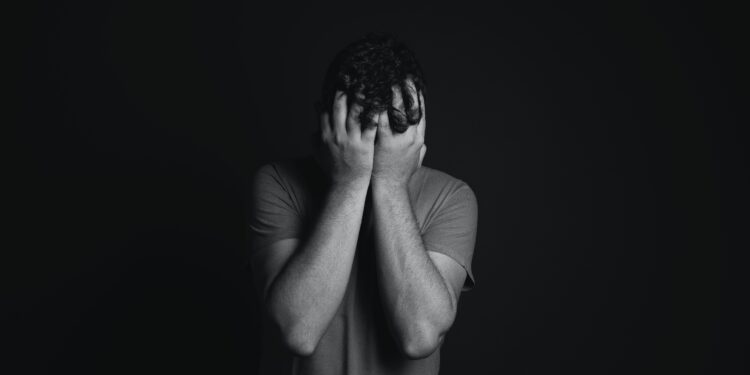Did you know that the brain continues to develop until the age of 25? The teenage years are a turbulent time for our brains, with many changes occurring simultaneously. It’s no wonder that so many young people struggle with mental health issues during this time. Anxiety and depression disorders are among young people’s most common mental health problems. According to the National Institute of Mental Health, almost 25 percent of teenagers experience anxiety and depression at some point. If left untreated, it can lead to devastating consequences. Brain strokes, also known as cerebrovascular accidents (CVAs), are caused by a blockage in one of the brain’s blood vessels and result in impaired blood supply to part of the brain. Statistically speaking, CVAs are more common among adults over the age of 65 but can also occur in teens and young adults. Fortunately, recovery is usually fast and complete if caught early enough and treated quickly. This is caused to young people who face high levels of stress and/or have had traumatic experiences in the past. This age’s stress may include school pressure, exam anxiety, peer pressure, relationship problems, and drug use. A child or teen’s brain is still developing and is particularly sensitive to changes. As such, it can be affected by many external and internal factors.
Mental distress is a broad term used to describe a range of mood disorders and other mental illnesses. Although people of all ages can experience mental distress, it is most common in people aged between 16 and 24. Mental distress can affect people in different ways. Some people have brief episodes that last only a few days, while others have longer-term problems. They include depression, anxiety disorders, and bipolar disorder. People with mood disorders often have low moods, feel unhappy, and lack energy. They may also have difficulty concentrating and making decisions.
Some of the disorders are :
Anxiety attacks
Anxiety attacks are intense feelings of dread, panic, and fear that can be both physical and emotional. They are often considered a form of mental illness. Researchers estimate that about 30 percent of the world’s population experiences an anxiety disorder at some point in their lives. Women are more likely than men to experience an anxiety disorder. A person experiencing an anxiety attack might have palpitations, shortness of breath, dizziness, nausea, feelings of unreality, and fear of losing control or going crazy. Anxiety attacks can also trigger other symptoms, including muscle tension, headache, general fatigue, and shakiness. Anxiety attacks can occur at any time, even during what would otherwise be a relaxing situation.
Mood Swings
Mood swings are sudden and dramatic changes in a person’s mood. Mood swings are common during adolescence, but they can also affect adults. Mood swings can cause people to have sudden feelings of intense happiness and/or sadness, irritability, restlessness, aggression, and anxiety. Mood swings may be caused by some factors, including stress, hormonal changes, certain medications, or biochemical imbalances in the brain.
Depression
Depression is a mental health condition that induces a constant feeling of sorrow and a loss of interest or pleasure in activities that you used to enjoy. If left untreated, depression can lead to self-destructive behaviour, harmful self-talk, suicidal thoughts, and even suicide. For a teenager or young adult, depression can mean trouble with friends, poor school performance, and trouble with loved ones.
Panic Attacks
A panic attack is a sudden and severe anxiety attack, often accompanied by intense physical symptoms. Panic attacks may occur unexpectedly, even if you have had them before. They can happen at any time, even when you are alone. A panic attack can cause frightening physical symptoms similar to a heart attack. These symptoms can include palpitations, chest pain, and shortness of breath, dizziness, abdominal distress, light-headedness, nausea, sweating, trembling, and detachment from oneself. A panic attack may also cause emotional symptoms, such as a feeling of losing control, a fear of dying, or a feeling of impending doom.
Symptoms of Poor Mental Health
One of the most common symptoms is a change in behaviour. This can manifest as sudden outbursts of anger, mood swings, and/or withdrawal from social situations. Other symptoms may include a change in sleeping patterns, unexplained changes in eating habits, low self-esteem, hopelessness, and/or thoughts of self-harm.
The good news is that mental health problems in young people can be treated. If you suspect that you or someone you know is suffering from poor mental health, it is important to seek help as soon as possible. A mental health professional can help you come to terms with your feelings and find ways of managing your symptoms. Early intervention can help prevent poor mental health from becoming a long-term problem.
Author:
Pankaj S. It is the Co-founder and CEO at ClinicSpots. A serial entrepreneur, Pankaj is a passionate Content Creator and Content Marketer. He has more than 15 years of diverse experience in healthcare, entrepreneurship, business, and product development. His creation, ClinicSpots, is a digital health company that empowers users (patients) to find doctors and envisions creating the world’s next Medical Quora.

































